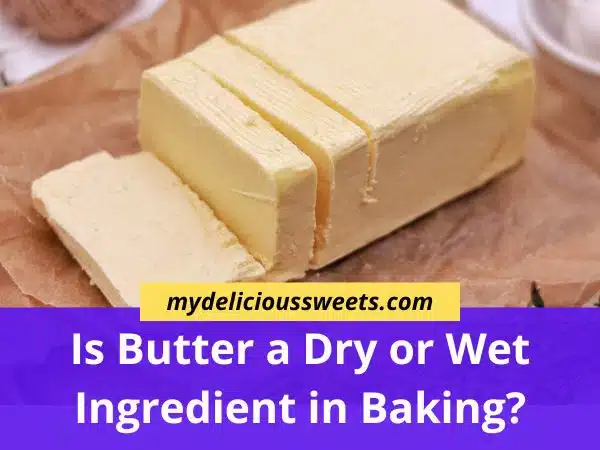In baking, butter is a common ingredient that plays a crucial role in many recipes. Understanding whether butter is considered a dry or wet ingredient is essential for successful baking. In this blog post, we’ll break it down simply and explain its role in your favorite baked goods.
Butter can be classified as a dry ingredient when solid or semi-solid and as a wet ingredient when melted. It's typically solid in cooler environments and can be used as a dry ingredient since it doesn't flow like liquid components. However, when exposed to heat, butter readily melts into a liquid state and is considered a wet ingredient when used in this form.
Dry and Wet Ingredients in Baking
Dry ingredients in baking refer to those components of a recipe that are typically in a solid or powder form and do not contain a significant amount of moisture. These ingredients include items such as flour, sugar, baking powder, baking soda, salt, cocoa powder, and spices. Dry ingredients provide structure, texture, and flavor to bakery products.
Wet ingredients, on the other hand, are the liquids used in baking recipes. These can be water, milk, eggs, oils, extracts, or yogurt. Wet ingredients add moisture, fat, flavor, and binding properties to baked goods. The role of liquid ingredients is to dissolve and hydrate dry ingredients, as well as to initiate chemical reactions, such as the leavening process.
Properties of Butter
Butter is a product created through the physical processing of milk fat. At 20°C, it maintains a solid, spreadable consistency, forming a “water-in-fat” emulsion. The fat content in butter can range from a minimum of 80% to a maximum of 90%.
As a valuable energy source for the human body, the butter melts close to body temperature, allowing for rapid and nearly complete absorption (95-98%). While butterfat should be consumed in moderation due to its cholesterol content, it also provides essential fatty acids and fat-soluble vitamins, particularly vitamins A, D, and E.
Although butter has a tendency to become rancid, its shelf life can be extended through freezing. It readily absorbs odors, so it’s advisable to store it in an odor-free refrigerator at +5°C and bring it to room temperature before use.
Butter contains some water, typically around 15-20% by weight, but this is relatively low compared to other liquid ingredients like milk, yogurt, or cream. It’s a primary source of fat in many baking recipes.
The Role of Butter in Baking
When it comes to culinary applications, butter is an exceptional ingredient for creating top-quality pastries and creams. It infuses products with a unique flavor and aroma, enhances moistness and richness, and slows down the staling process of baked goods.
Unsalted butter has a fresher, sweeter taste, making it more suitable for baking, although it is more perishable. When using salted butter, it might be necessary to decrease the amount of salt in the recipe.
Fats in general, including the fat provided by butter, act as a tenderizer in the dough or batter. It coats flour particles, creating a barrier that prevents the formation of gluten strands, resulting in a tender and crumbly texture in cookies, and pastries. In short dough recipes, butter is used as a shortening agent. Shortening refers to fats that inhibit gluten formation, resulting in a crumbly, “short” texture. It also enhances dough pliability.

The milk solids it contains contribute to the browning of the baked products. This reaction occurs when proteins and sugars in the butter brown under heat, giving baked goods a nice golden-brown color and a slightly nutty flavor.
When used in techniques like laminating, the dough is folded and rolled with layers of butter. The water content in the butter turns into steam during baking, causing the layers to separate and create the characteristic flaky texture in baked items like croissants and puff pastry.
For more information on the role of butter in laminated doughs, you may wish to read my article on the raising agent in puff pastry.
Final Thoughts
In conclusion, butter’s unique properties make it an indispensable component of many baked goods. As a solid, it can be classified as a dry ingredient. When melted, it transitions into a wet ingredient.
Butter enhances not only the taste but also the texture and appearance of baked items, adding moisture, and aroma, and aiding in the creation of flaky, tender layers.

